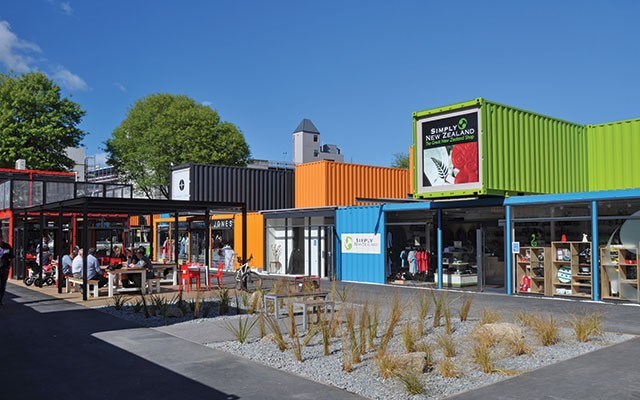Anyone who was in Christchurch, New Zealand on February 22, 2011 will have a story to tell about that infamous day. On that late summer Tuesday, a midday earthquake registering 6.3 on the Richter scale struck on a shallow fault line near the city centre with devastating consequences.
Infrastructure already weakened by the magnitude 7.1 Canterbury earthquake, which occurred nearly six months earlier, crumbled as the earth shook and undulated like a rug being pulled out from beneath the city's feet. By the time the dust settled, 185 lives had been lost and large sections of the city lay in ruin.
The central business district was in such bad shape that it was cordoned off for two years as a very gradual cleanup and rebuild began, first along the edges and in the suburbs.
I had been through Christchurch on my way to and from Antarctica numerous times in the 10 years before this great trauma befell the Garden City on New Zealand's South Island. Through repeat visits it became a place where I felt at home, despite its great distance from my actual home. I had my favourite spots and knew my way around the very walkable urban core that was centred on the great stone Anglican cathedral that is the city's namesake. Thus, it was with curiosity and slight trepidation that I returned for my first look at post-earthquake Christchurch nearly six years after the disaster.
I was aware that the Christchurch I had known no longer existed, but what I saw on the first afternoon and evening of my visit was still a bit of a shock. Many buildings were still abandoned, some were half-standing among piles of rubble, and many others were simply gone.
Commercial streets such as Manchester Street, which had been lined with low-rise brick buildings, now presented block after block of open space and gravel parking lots. It was literally disorienting, as many of the old, familiar landmarks were no longer to be found. The cathedral itself lost its iconic tower and remains in ruin at the heart of the city.
After a while, though, it became apparent that much of the untidiness was part of a massive rebuilding effort. In order to build up again, the damaged buildings had to be knocked down. During the day, the city was bustling with construction activity, which itself has helped revive the local economy and attract a diverse assembly of workers to the area. The central business district is once again open for business, and areas just outside the city centre that were able to rebuild sooner are thriving.
Indeed, this is not the Christchurch I knew 10 years ago. A new city is emerging, with ambitious young entrepreneurs often leading the way. An edgy, artistic vibe has overtaken a place that once felt somewhat provincial and reserved.
One of the first commercial enterprises to open in central Christchurch after the quakes was Re:START, an outdoor shopping mall constructed of repurposed shipping containers.
The idea was to start bringing people back into the city to shop, eat, and mingle as they did before. Food trucks, trendy coffee shops, and art installations followed.
On High Street you'll find the Smash Palace, with its outdoor bar housed in an old bus. On construction fences and buildings throughout the city, you'll see colourful murals and the work of graffiti artists.
Outer neighbourhoods such as Riccarton and Merivale have had their own renaissance, as some well-known restaurant brands such as Dux de Lux (vegetarian and seafood, now called Dux Dine) and Sala Sala (Asian fusion) reopened in areas west of the city centre that were less damaged by the earthquakes.
Hagley Park and the Christchurch Botanic Gardens are as resplendent and peaceful as ever, offering a respite from the noise and commotion of the urban rebuild efforts. The flowering rhododendrons, majestic trees, and expanses of green grass are especially comforting if you've recently flown in from a northern hemisphere winter (or an Antarctic summer).
My conversations with locals revealed an abundance of optimism for a city that suffered great loss.
Although there is still frustration about the pace of recovery and insurance settlements for many, the prevailing atmosphere in Christchurch these days is one of energetic reinvention and innovation.
On my last night in the city, I had dinner at Café Valentino's new location on St. Asaph Street. The polished, modern industrial space evokes big-city sophistication. Again, I felt a bit disoriented, as I couldn't help but compare the room to its cozy, more intimate original location on Colombo Street. This experience reiterated the notion that my old, familiar Christchurch is gone, and that embracing change is the best way to enjoy the buzz of a city in the midst of its rebirth.
And it makes me want to go back in another year or two to see how it's all coming along.




